
Yuan Porcelain
During the Yuan period, cizhou, Jun and Longquan wares continued to supply traditional products to large part of the domestic market. The most important development was the increasing importance of Jingdezhen as a center for porcelain production. An indication of its importance was the setting up of the official Fuliang porcelain bureau (浮梁瓷局) in A.D 1278 whose functions included supervision and management of porcelain production in Jingdezhen for official use.
Building on the foundation of Qingbai, Jingdezhen also developed the shufu wares. But the most important event was the creation of Yuan blue and white wares and underglaze copper red decoration. The blue and white displaced cizhou iron brown decoration as the main stream underglaze decoration in Ming and Qing Dynasty. This is such a popular product that many people actually equate Chinese ceramics with blue and white.
Yuan court continued the Song policy to encourage overseas ceramics trade. Longquan celadon was enormously popular as can be seen by the large quantity found overseas and in the number of Yuan longquan kilns sites. Jingdezhen Qingbai/shufu and blue and whites were also important export items.
Jun Wares
During the Yuan period, Jun ware grew in popularity in Northern China. The number of kilns making Jun wares was enormous covering Henan, Hebei, Shanxi, and Inner Mongolia . The vessels consisted of mainly bowl, plates and with small number of jars, censers and vases. Interestingly, no Jun wares was excavated in region south of the Yangzi river. They were essentially made for use domestically in Northern China. Yuan Jun vessels are typically heavily potted and have unglazed footring and base.

One rare exception of Southern China Jun produced during the period was in Zhejiang Jinhua region. In the Sinan shipwreck, there were some Jun wares which were from Jinhua Tiedian kiln (金华铁店窑).
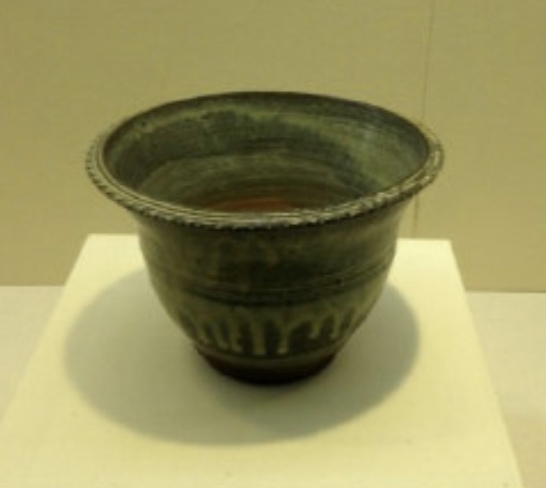 |
 |
| Sinan wreck Jun glaze examples from the Jinhua Tiedian kiln |
Cizhou wares
Cizhou wares continued to enjoy popularity in Northern China and mainly produced for domestic use. However, some were also exported overseas and were excavated in Southeast Asia countries. The main decorative style was underglaze iron-painted black/brown motif.
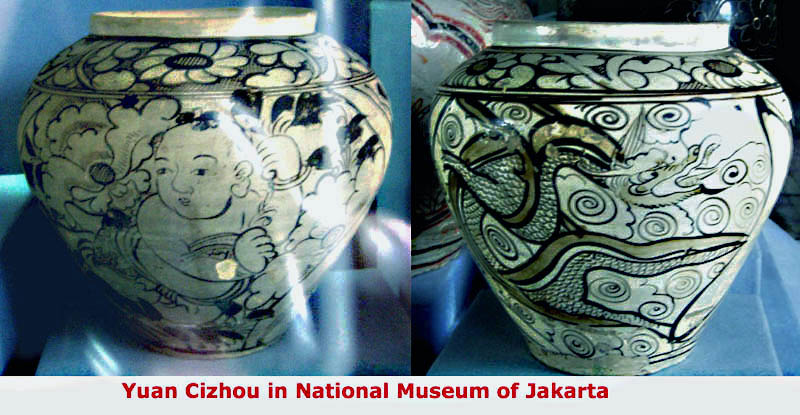
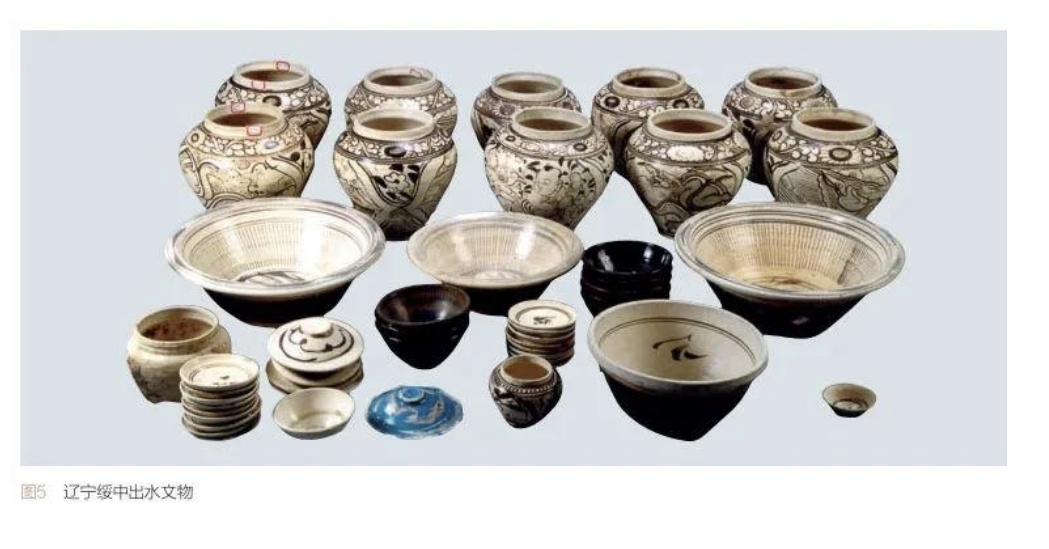 |
 |
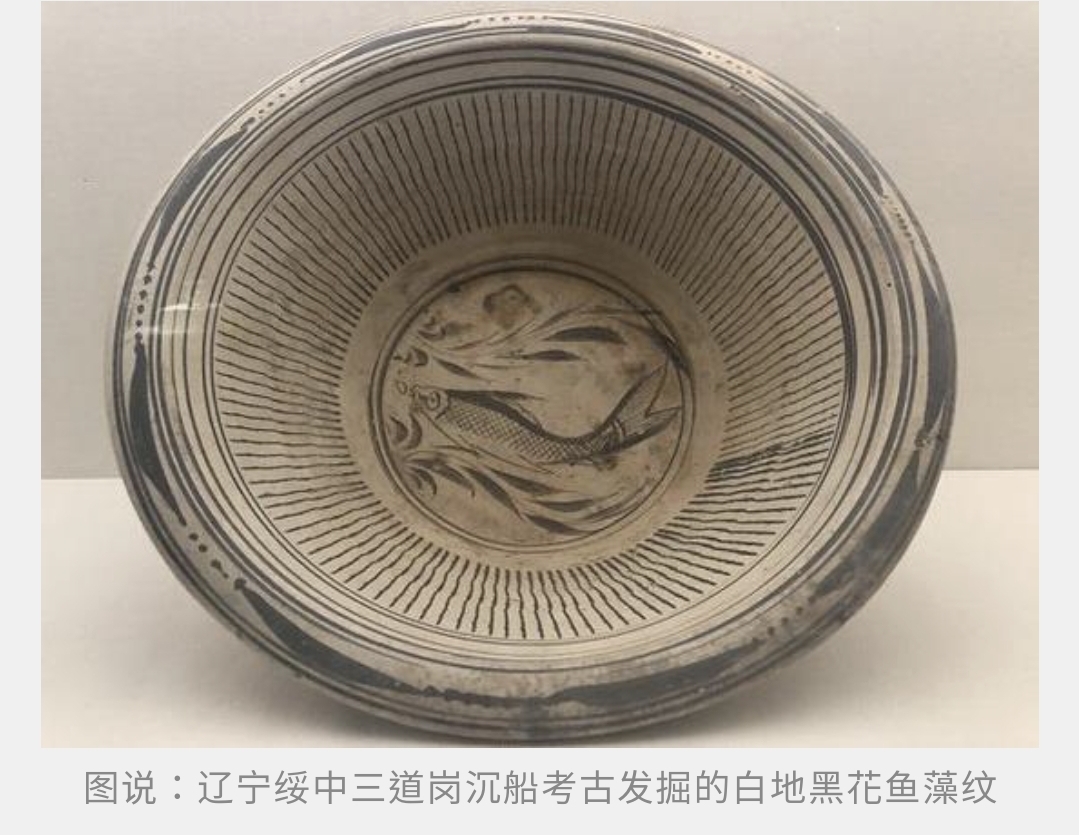 |
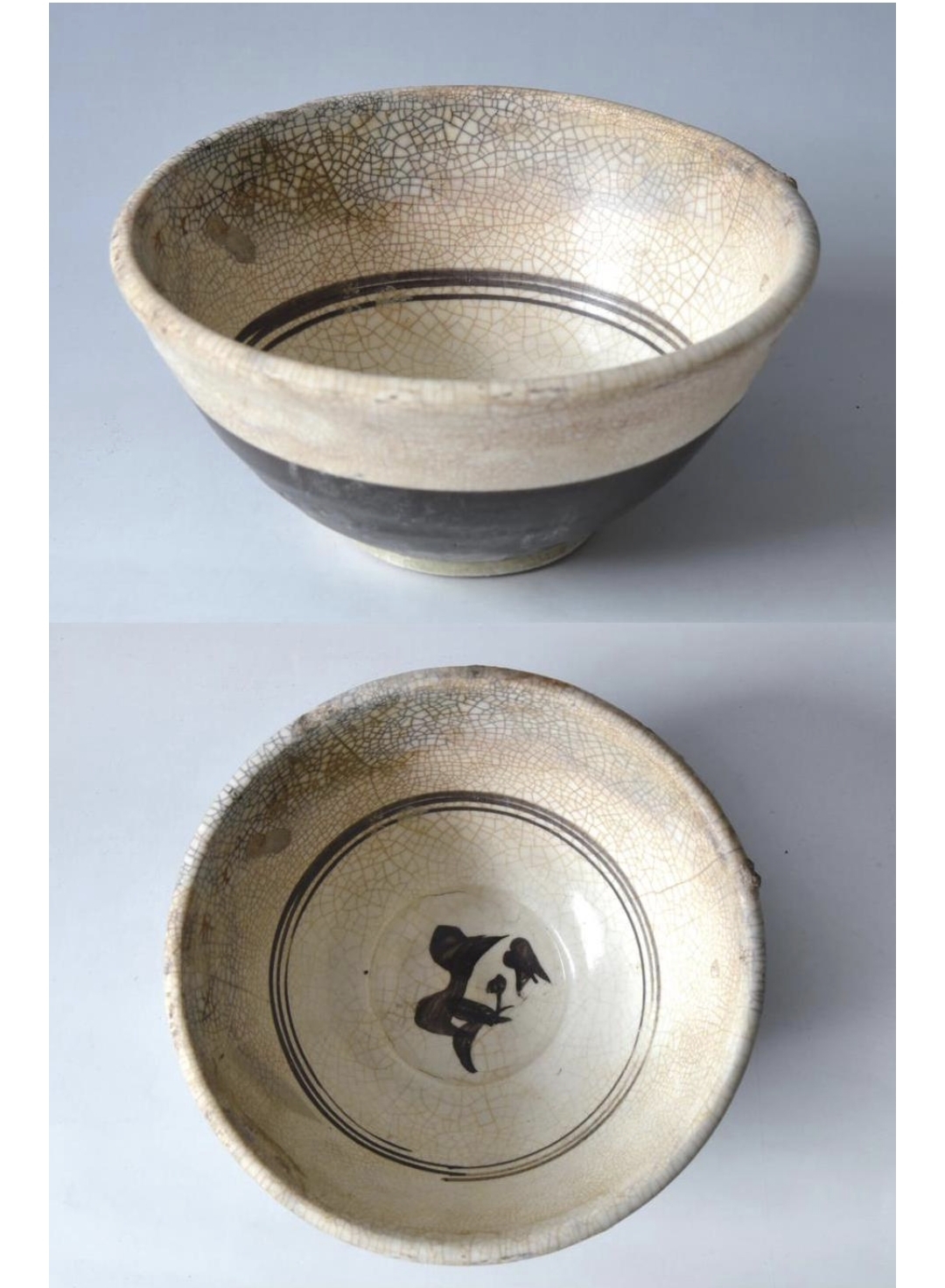 |
| Yuan Cizhou iron black/brown painted examples from the Liaoning Suizhong wreck |
Longquan Wares
Longquan celadon reached the peak of its production during the Yuan dynasty. It is characterised by the production of large vessels such as large plates, guan jars and vases. This is a great achievement as large vessels are not easy to produced successfully. Besides the continued use of curved/impressed motif, molded motif in relief also gained popularity during this period. Some decorative elements such as iron-brown rust colour splashes/spots and biscuit form motif was also popular.
During this period, Longquan celadon wares were exported in large quantity overseas. Some of the best examples could be found in the Yuan period Korea Sinan wreck.
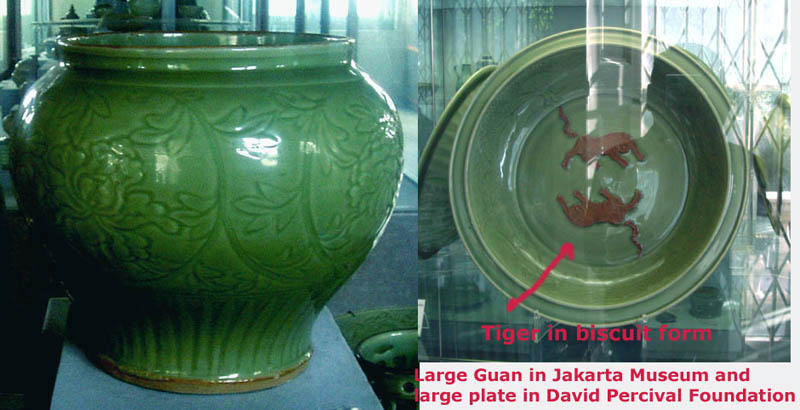
 |
 |
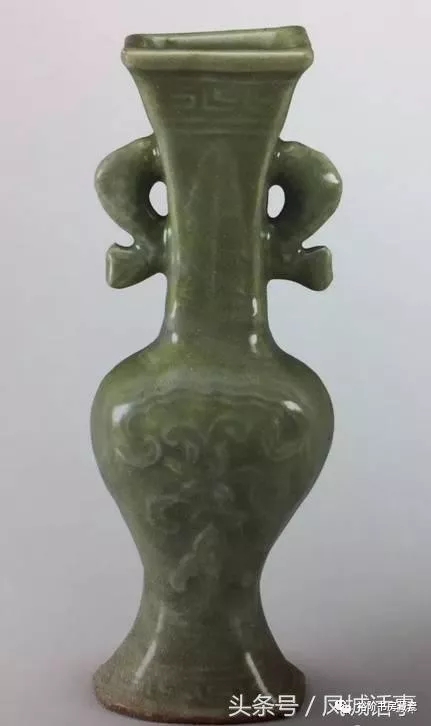 |
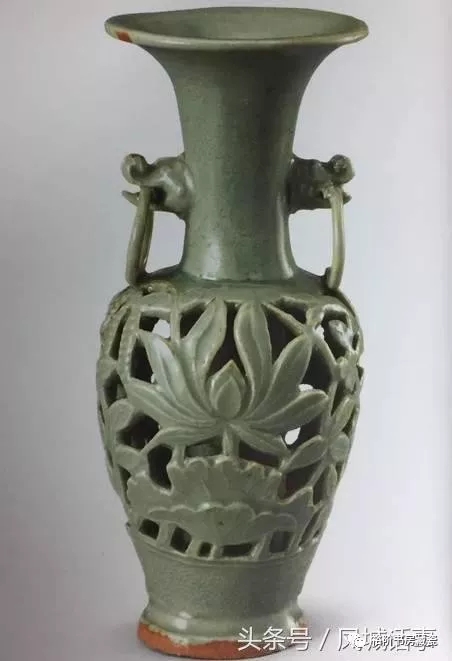 |
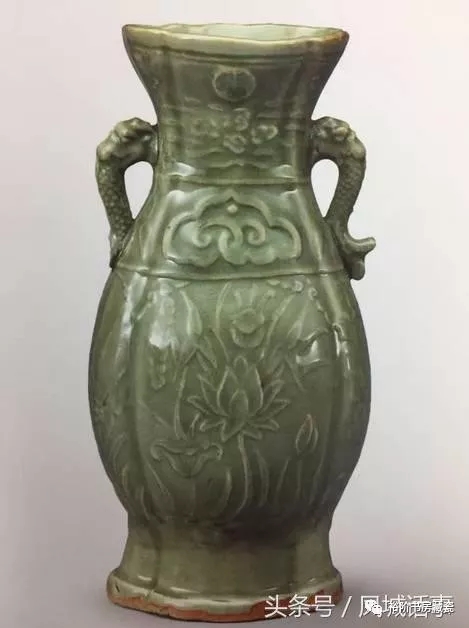 |
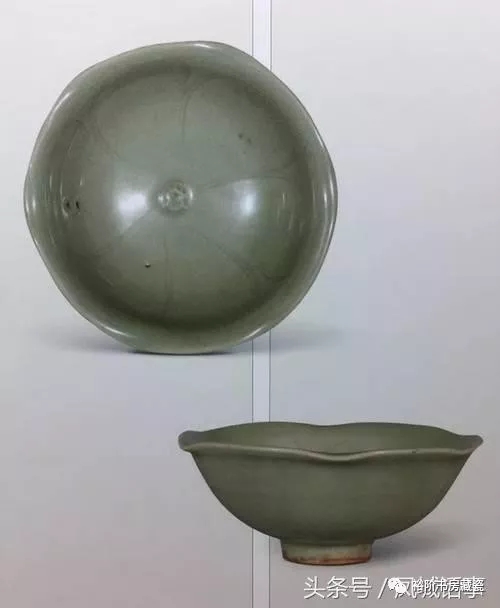 |
 |
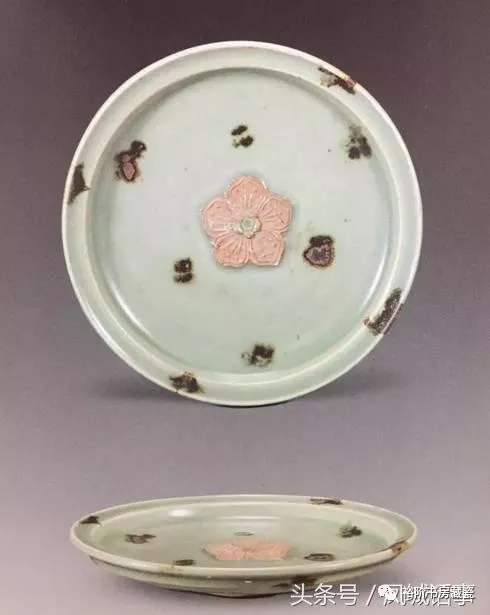 |
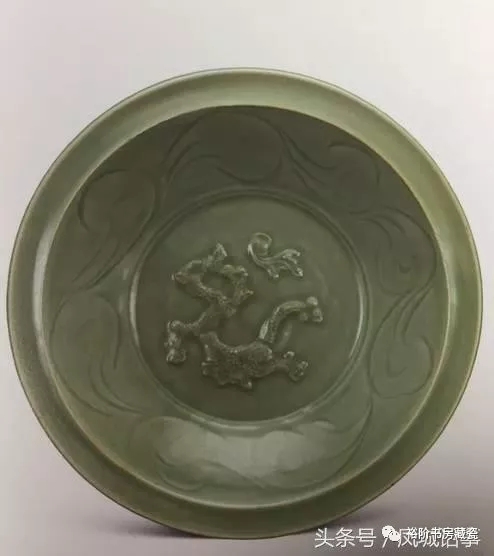 |
| Yuan Longquan celadon examples from the Sinan wreck |
For more on longquan celadon, please read : Longquan wares
Qingbai and Shufu wares
Jingdezhen Qingbai wares continued to be popular and constituted an important export item during the Yuan dynasty. During this period, some of the Qingbai products were decorated with iron-brown rust splashes/spots. Some of the best examples could be found in the Korea Sinan Yuan Wreck.
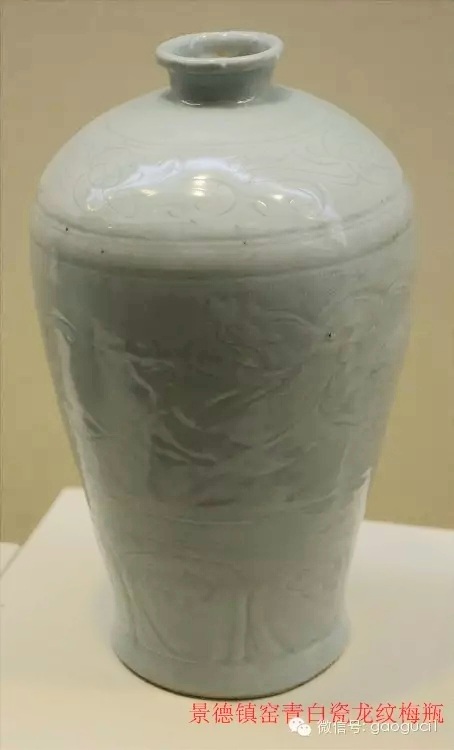 |
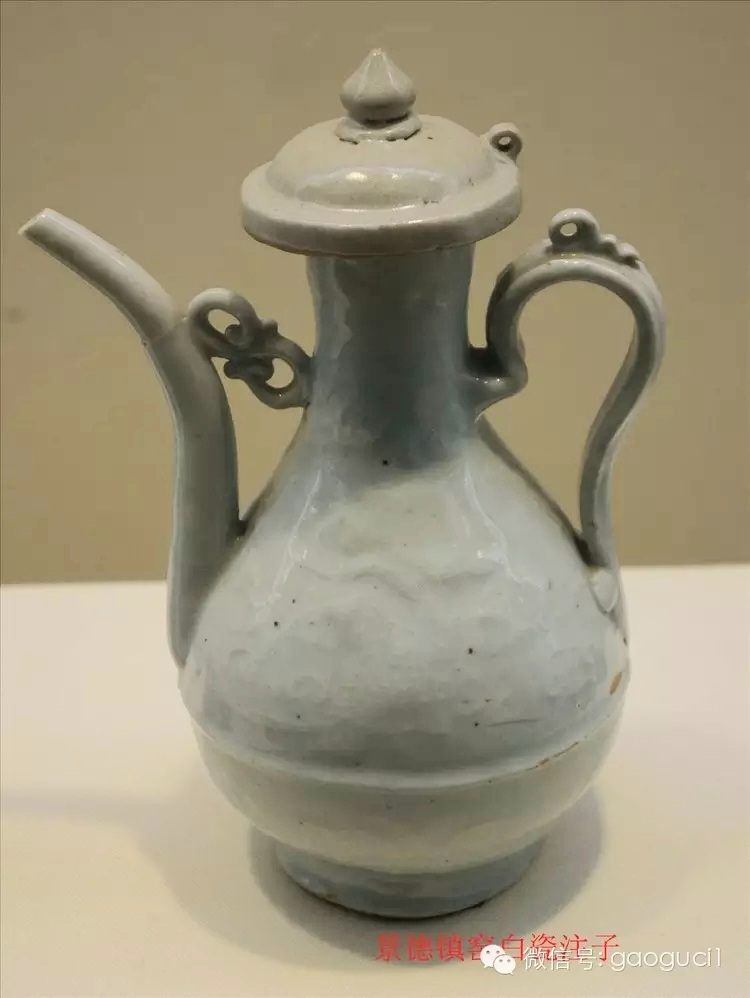 |
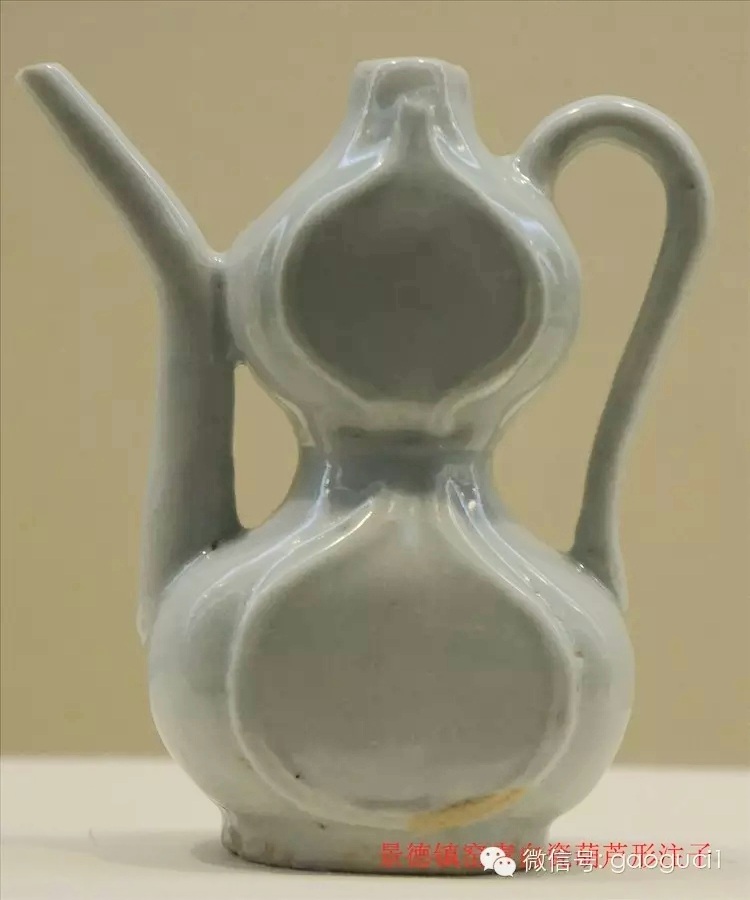 |
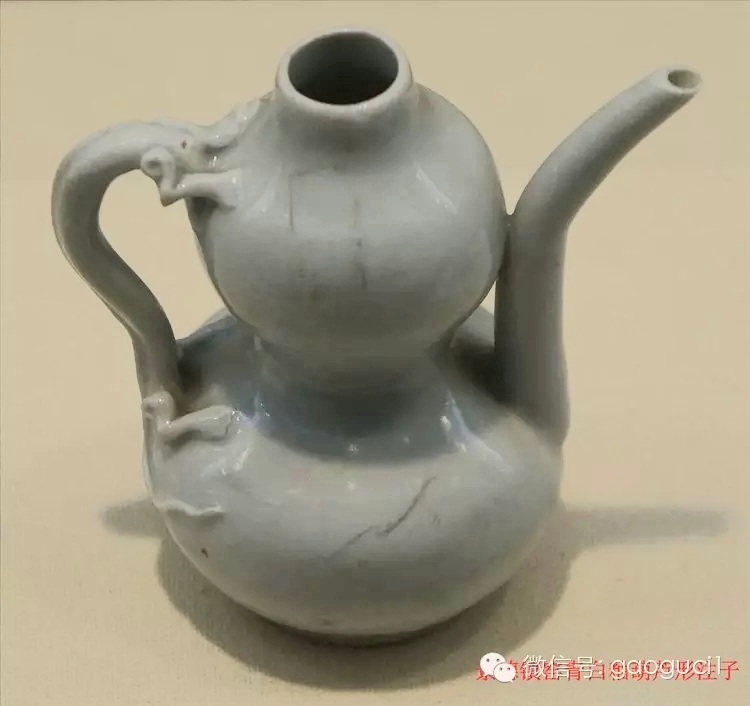 |
 |
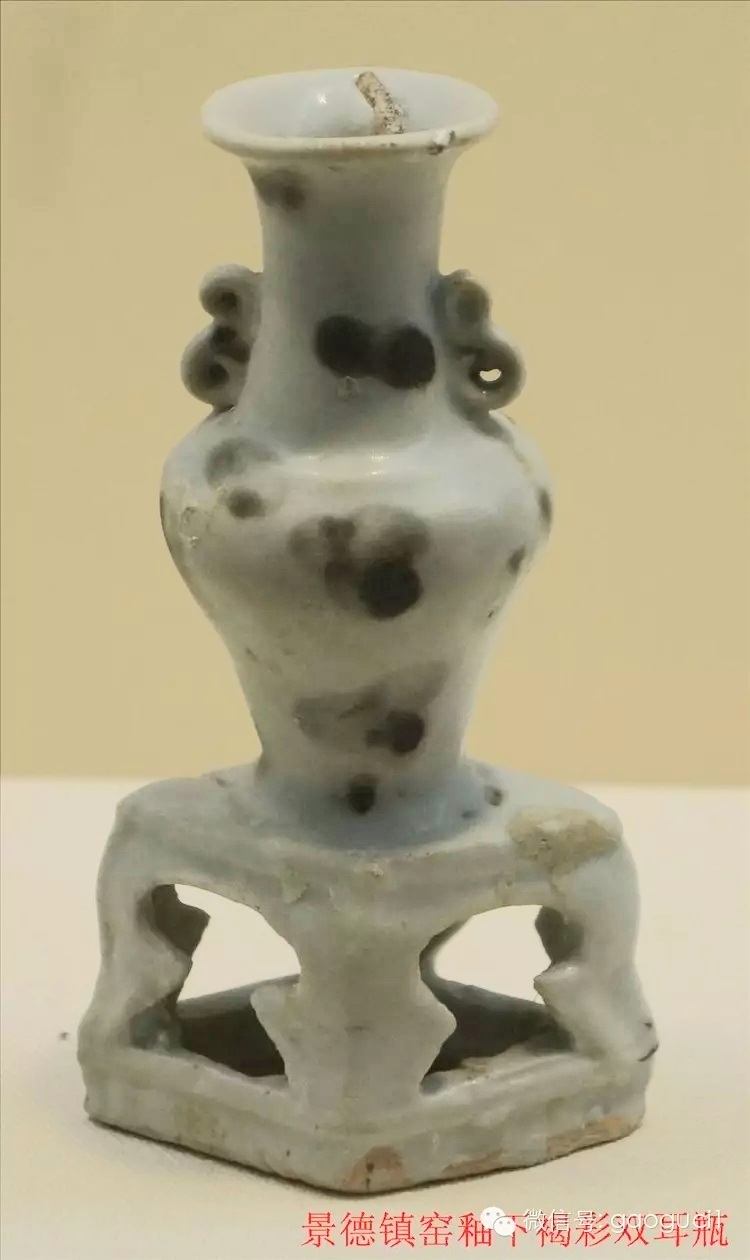 |
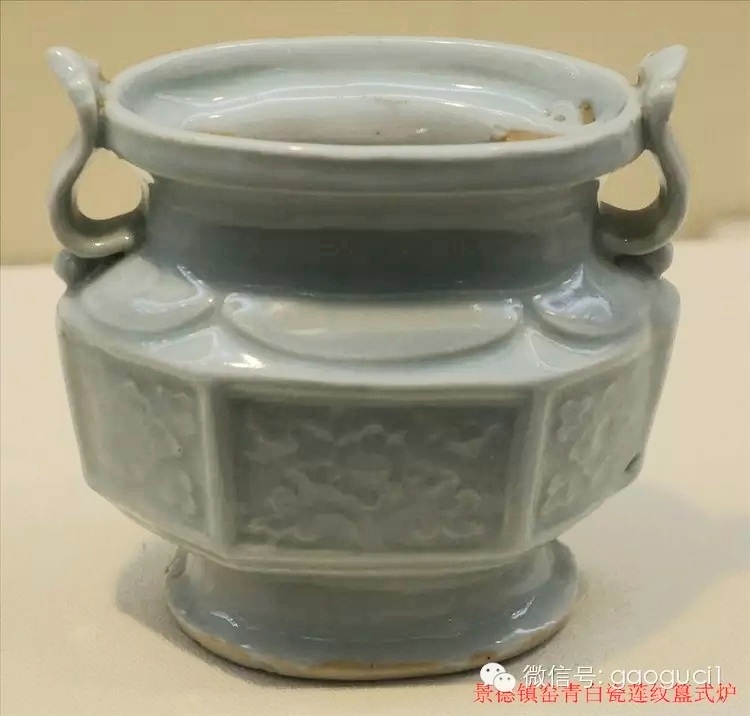 |
 |
 |
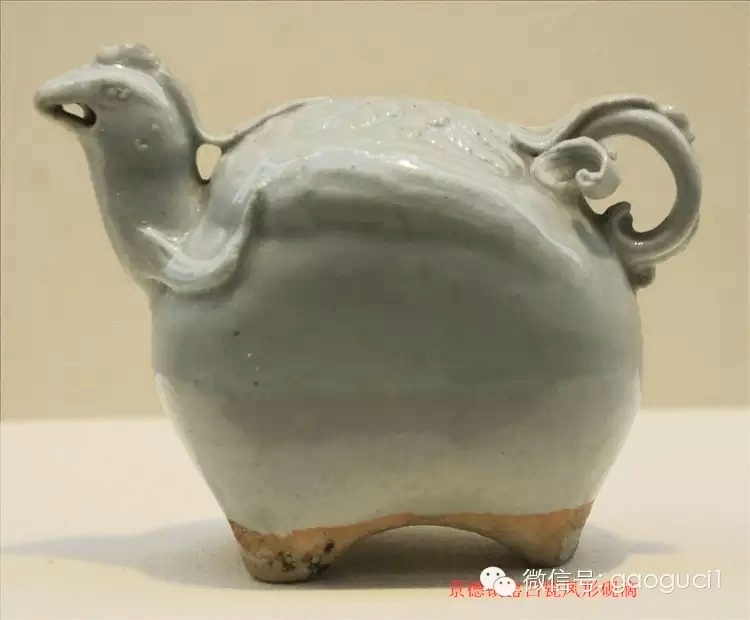 |
| Above Jingdezhen Qingbai examples from the Sinan wreck showcase the high quality of the products |
Subsequently another form known as Shufu glaze was created. It is thick, opaque and resemble the colour of goose egg. The good ones however could have a sugary white tone. The rough ones usually have a grayish tinge to the glaze. The shufu vessels, consisting of mainly bowls and dishes, were made in Hutian kilns which were located outside Jingdezhen, Jiangxi province. Some of the bowls and dishes have moulded relief motif and the chinese two chinese characters shu fu [枢府] meaning "Privy council". Hence, such glaze type wares were also termed shufu wares. Besides shufu, other characters included "tai xi" [太禧] meaning great happiness and "fu lu" [福禄] meaning good fortune and emolument could be found. However, majority have just either plain or molded relief motif of flowers, dragon or phoenix. Such vessels are typically more thickly potted and for the bowls/dishes, there is pooling of glaze at the inner and outer mouth rim.
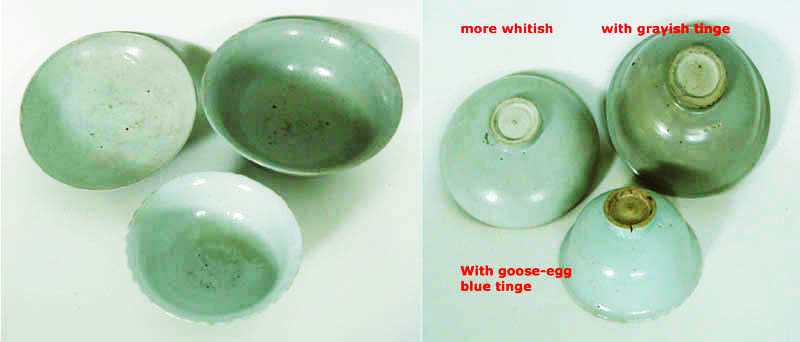
The starting date for production of shufu is still uncertain. In the the Sinan wreck of about A.D 1325, there were some shufu wares. Some excavated examples in China with the word "tai xi" were probably made for the the official institution, Taixi Zongyin Yuan [太禧宗禋院] which dealt with religious rites of the imperial court. It was set up in A.D. 1328. Hence, they should be made at least after A.D. 1328. A small number of shufu wares continued to be made in the Hongwu period. The glaze was subsequently further improved and a pleasing sugary white glaze known as Tianbai [甜白] was produced during the Yongle period.
Some shufu wares were decorated with overglaze red/green motif. A very rare type was the embossed effect motif created by trailing the outline of motif with coloured-slip and completed with in-laid gold. Most the the examples in existent are in Shanghai museum. The enamels consisted of red, green, yellow, white, blue and torquose blue colour. Vessels with such unique decorative techniques consisted of bowls, saucers, stem cups/bowls and, yuhuchun vases and censers.
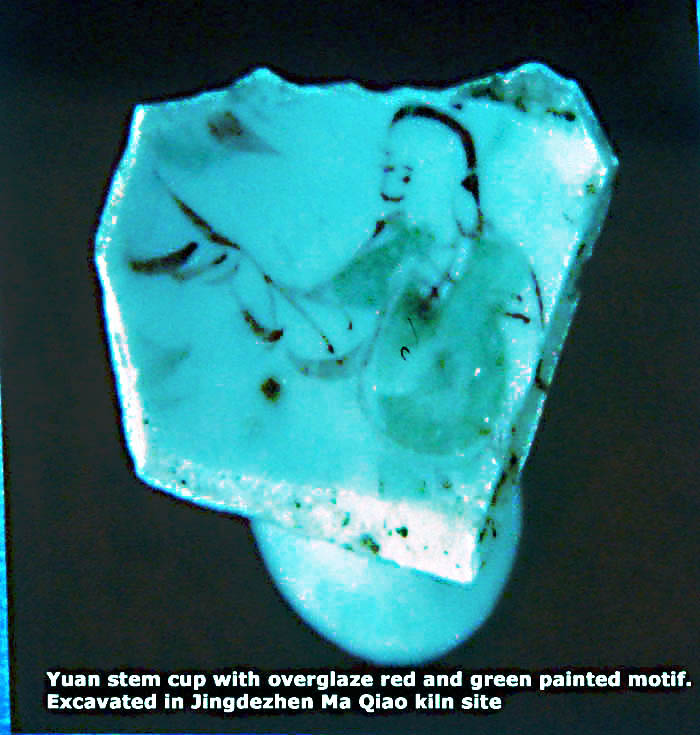

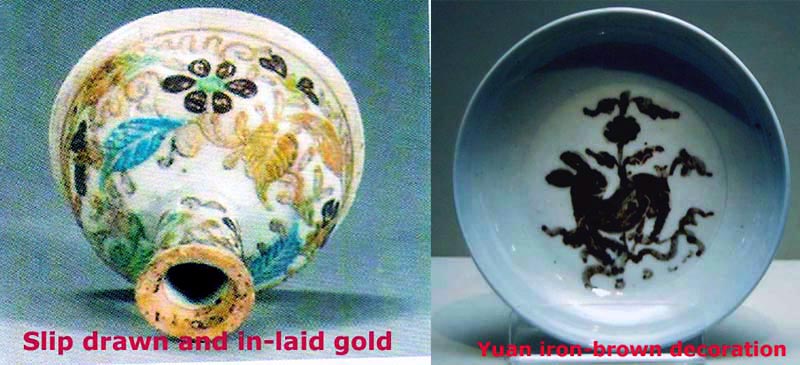
For more on Shufu ware, please read: Shufu (luan bai) wares
Types of Jingdezhen Yuan Underglaze Decorations
In the Sinan cargo, there were a few pieces of qingbai glaze bowl with underglaze iron-brown decoration. The production of this category of decoration was apparently small and did not win many admirers. Cobalt oxide and to a much lesser extent copper oxide were found to be more suitable as medium for underglaze decoration on porcelain wares.
Underglaze blue and white wares
Yuan blue and whites were produced from about A.D 1330. It was earlier thought to be around A.D 1319 (6th year of yuanyou (元祐))based on a pair of vases excavated in Hubei. However, scientific test has confirmed that the colorant used is iron oxide and not cobalt.
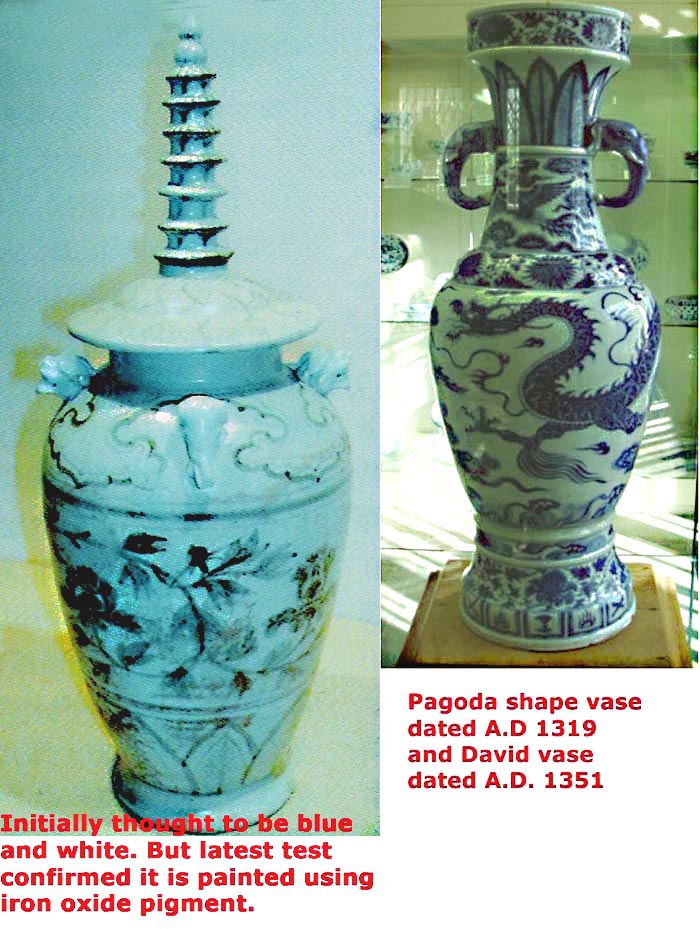
There are two types of Yuan blue and whites ie the high end type with vibrant blue and those small vessels with greyish tone blue. Those which are found in the Middle East are generally the high-end type. They consisted of large plates, guan jars, rectangular flat vases, meiping/ yuhuchun/ gourd-shape vases and big bowls. The best collections are now in Topkapu Saray in Istanbul Turkey and Ardebil in Iran Bustan in Tehran.
The motif and composition on the pieces was similar to that of the David Vase. It is termed Zhizheng type. The quality is consistently very high and typically with different motifs organised within separate band. For example, the David vase has 8 bands of motifs. The glaze on the vessel is also more transparent with a tinge of blue. It is very different from the Qingbai or shufu glaze found on those small blue and white vessels for the Southeast Asia market.
The varieties of motif are numerous ranging from many different type of flowers and floral scrolls, dragon, phoenix, crane, heron, mandarin duck, fish, mystical animals, Buddhist precious objects, clouds, waves, human and landscape depicting scene from ancient episode from the 3 kingdom and Han Dynasty. Visually the composition looks crowded as if the designer is adverse to leaving empty spaces. But they do not look dis-organised or messy. Another interesting approach is having some of the motifs reserved in a blue background.

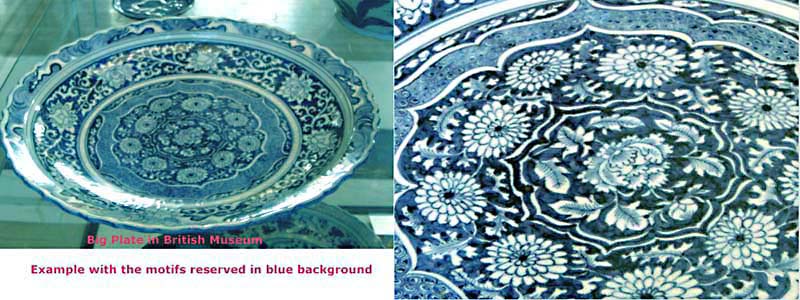
Most of the lower quality blue and whites, such as small ewers, small jarlets, cups and bowls with a Qingbai or shufu glaze were exported to Southeast Asia countries such as Philippines and Indonesia. The design is generally simple, consisting of floral motif decorated with grayish local cobalt blue. But there were small quantity of high quality guans, plates and vases with motifs arranged in separate bands as typified by the David vase.
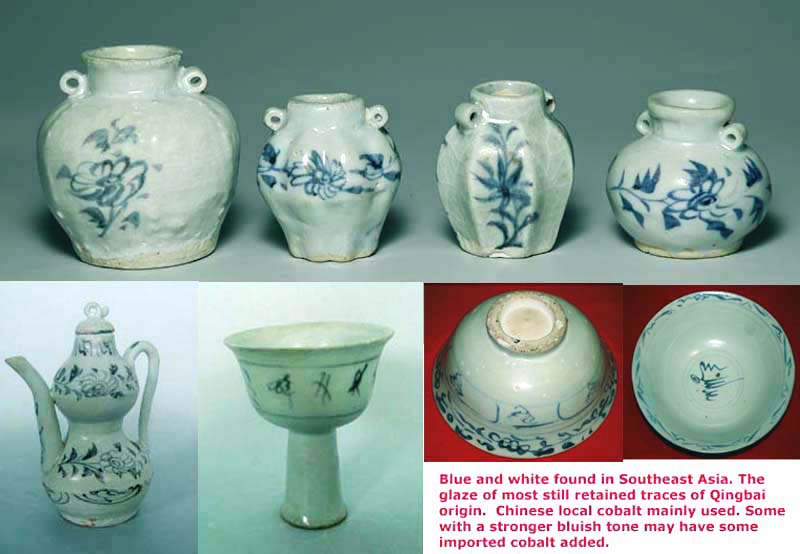
It is generally believed that those high end type of blue and white with vibrant blue used imported cobalt. Those with greyish tone are decorated with local cobalt. However, recent scientific tests have shown that all the Yuan blue and white used imported cobalt. The imported cobalt is called sumali [苏麻离青] or suboni [苏渤泥青] blue. Some suggested sources of the imported cobalt are Kashan in Iran or Samarra in Iraq.
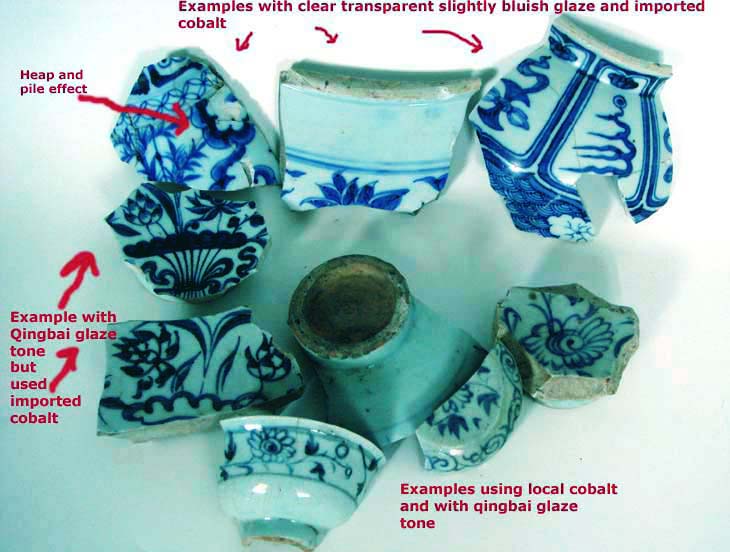
To find out more about Yuan blue and white, please read this article.
Underglaze Copper Red ware
The earliest known example of Yuan underglaze copper red is probably the dish found in the Sinan shipwreck (A.D. 1325). It has two leaf incised, washed with a lighter copper red and calligraphy written in a thicker copper red pigment. The dish was then covered with a Qingbai glaze and fired. Most of the known examples of the copper red were decorated with motif executed in pencilled style. Majority has the Qingbai type glaze. The red is usually light and grayish to tone, indicating that control over the material is still not perfected.
Copper red is volatile and unstable during firing. If too thinly applied, it may volatilise and lose its red colour. If too thickly applied, it becomes unsightly darkish in tone. There are a number of extant copper red vessels with impressed or incised motif. The copper red was either washed over the motif or the motif reserved with red background. They may be examples of early experimentation with copper red.
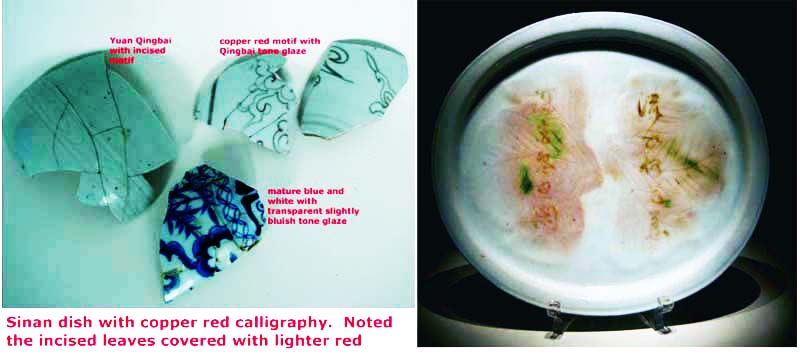
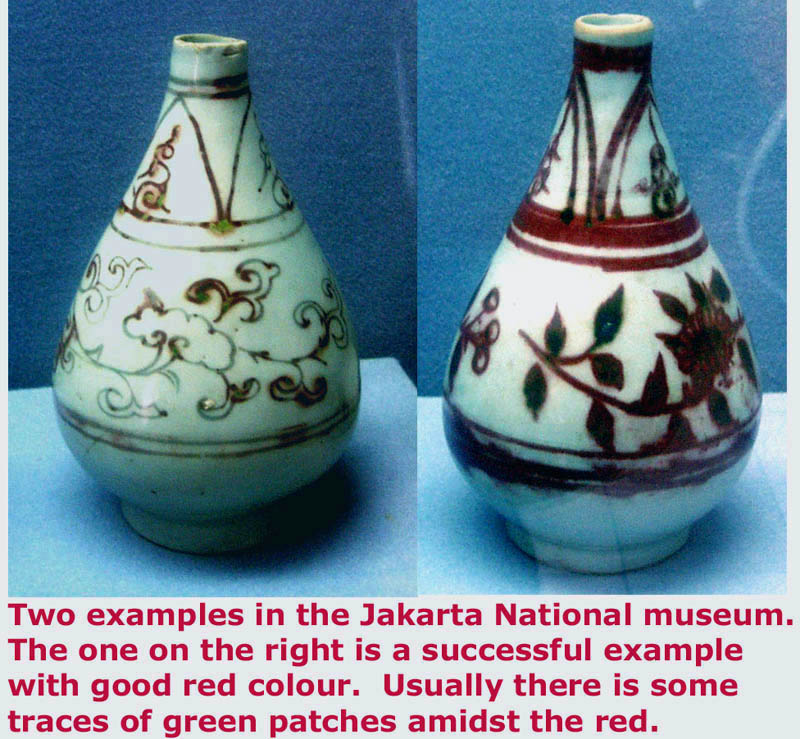
|
|
Yuan copper red ewer with floral motif recovered from the sea in Indonesia |
|
|
|
Yuan copper red ewer with fish recovered from Indonesia Trowulan
There were also some vessels decorated with underglaze blue and copper red. A good example is the below guan in the David Percival Foundaton. It has added decorative elements of trailed slip beaded lines and moulded decorative element luted and looks like open work in relief. This style of decoration was popular during the Yuan period and found on many Qingbai guan jar and yu hu chun vases. The Qingbai glaze on such vessels appear more opaque and could sometime be confused with shufu glaze.
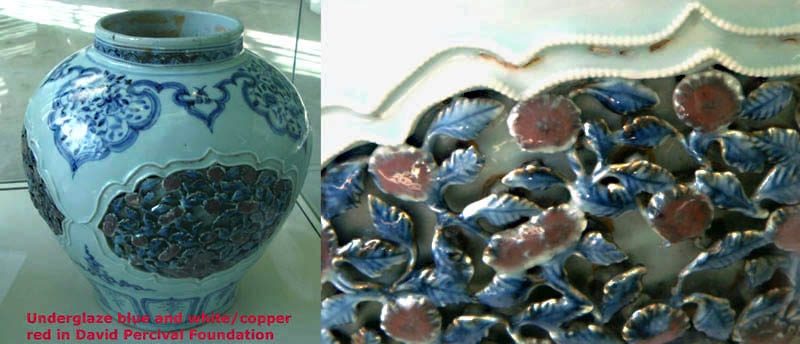
Monochrome Blue wares
Monochrome blue glaze was successfully produced during the Yuan period. There a a beautiful sapphire colour tone. There were some examples of wine cup, saucer and vessel yi found in Hebei baoding. There were traces of gold decoration on the vessels.
 |
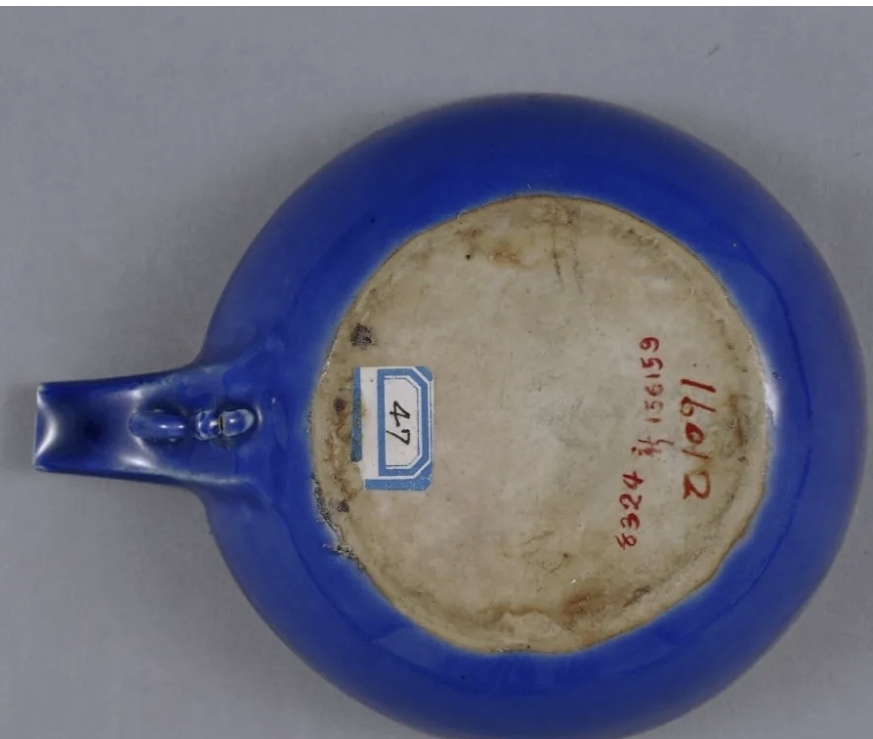 |
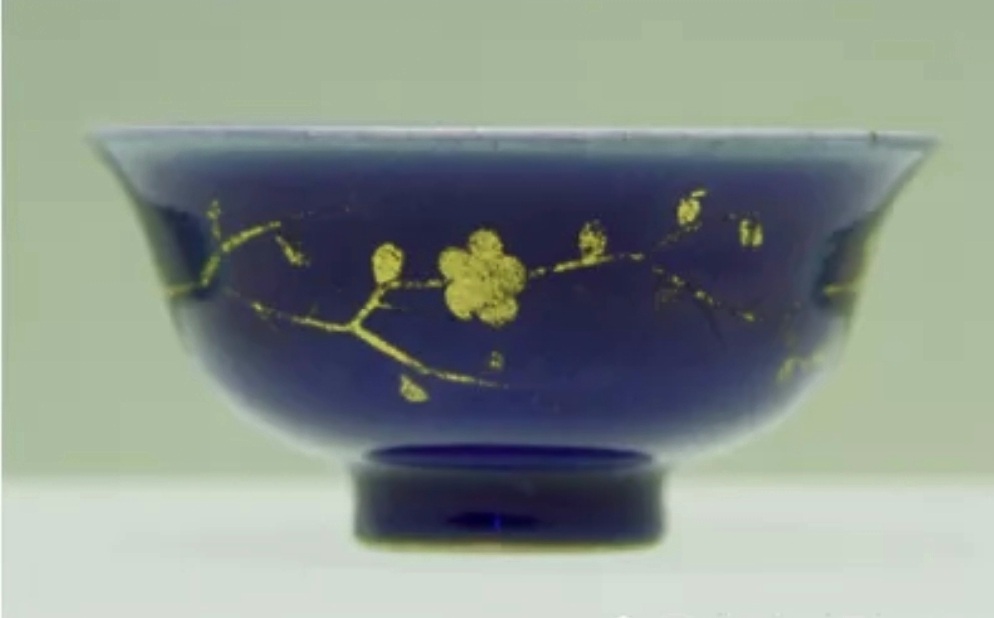 |
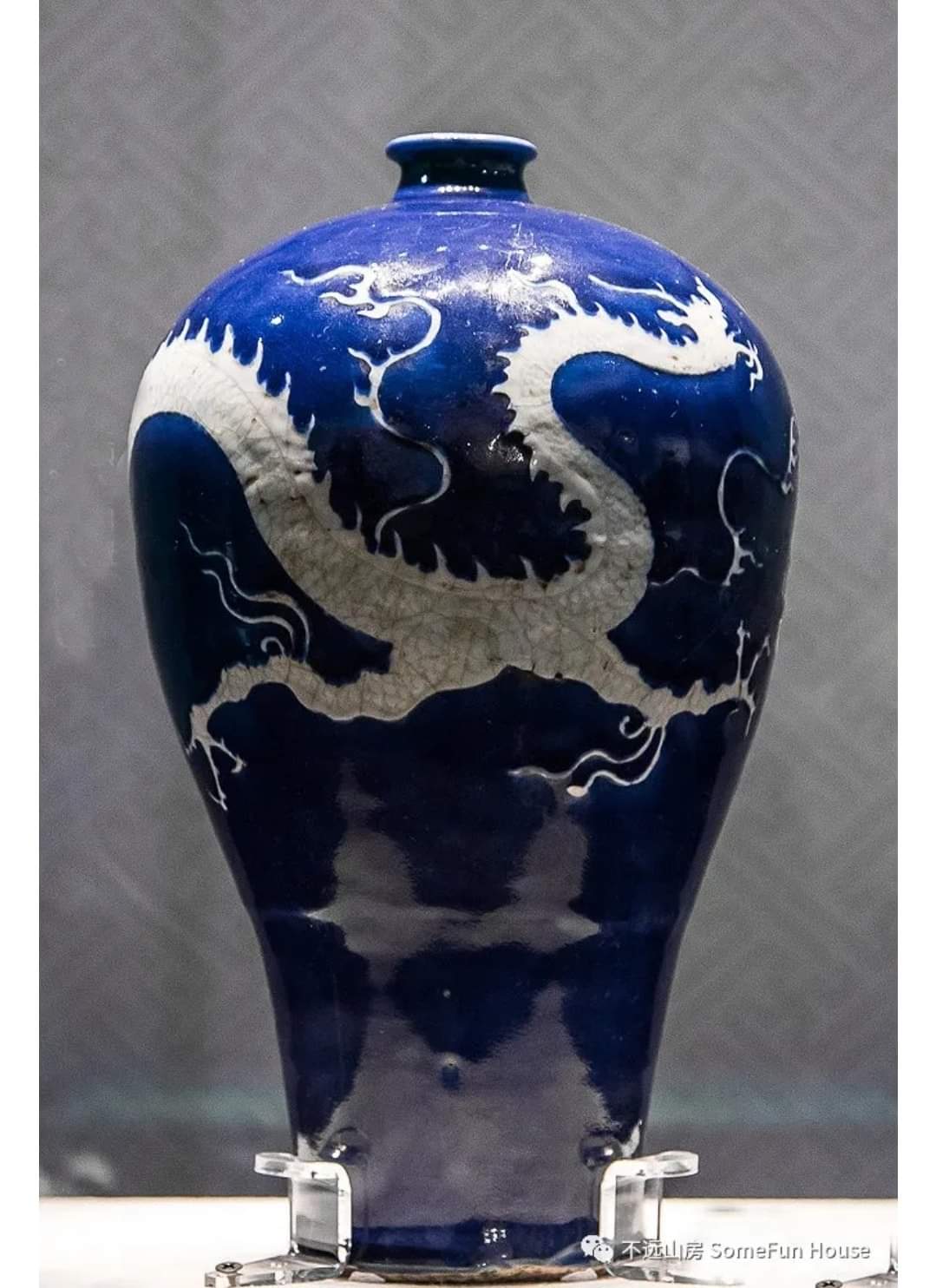 |
| Yuan monochrome blue glaze with gilded decoration. |
Updated by: NK Koh (14 Dec 2009), (3 Oct 2021)